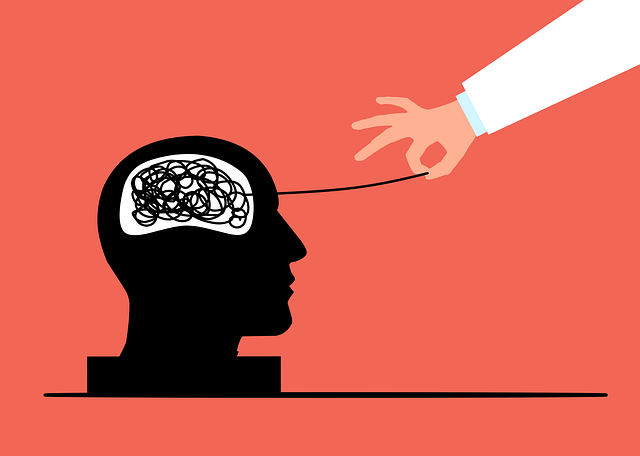Risk assessment is paramount in healthcare, especially for therapy for young adults and geriatrics, focusing on patient safety and well-being. It involves identifying treatment, environmental, and demographic risks, leading to personalized interventions. For young adults, this includes coping with academic and social pressures through workshops and mental health awareness campaigns. Geriatrics require tailored strategies like physical activity and cognitive stimulation programs. Burnout prevention for healthcare providers is vital, ensuring high-quality care. Comprehensive harm minimization plans, updated regularly based on research, address challenges such as substance abuse and acute stress events. Effective risk assessment dynamically adapts to evolving needs, enhancing the quality and safety of therapy for young adults geriatrics.
In the realm of healthcare, particularly within geriatric therapy for young adults, risk assessment and harm minimization planning are indispensable cornerstones for safe practice. This comprehensive guide delves into the critical process of understanding risk assessment as a foundational step, identifying harms and vulnerabilities specific to this demographic, and developing robust minimization strategies.
Through exploring evidence-based interventions, effective implementation, and continuous improvement, healthcare professionals can ensure optimal patient care and enhanced outcomes in geriatric therapy for young adults.
- Understanding Risk Assessment: A Cornerstone for Safe Practice
- Identifying Harms and Vulnerabilities in Young Adult Geriatric Therapy
- Developing a Comprehensive Minimization Plan: Strategies and Interventions
- Implementing and Monitoring: Ensuring Effective Risk Management
- Continuous Improvement: Adapting Plans for Evolving Patient Needs
Understanding Risk Assessment: A Cornerstone for Safe Practice

Risk assessment is a fundamental process in healthcare, especially when prioritizing patient safety and well-being. It involves a thorough analysis of potential hazards and their likelihood of causing harm, enabling professionals to implement effective harm minimization strategies. For young adults undergoing therapy or geriatrics care, this practice is paramount. By identifying risks associated with treatment, environmental factors, or even client demographics, healthcare providers can develop tailored interventions.
In the context of therapy for young adults and geriatrics, risk assessment goes beyond addressing immediate dangers. It encompasses burnout prevention strategies for healthcare providers, who often face high-stress environments. Regular Stress Management Workshops Organization can enhance emotional intelligence, a vital component in understanding client vulnerabilities. Through these practices, professionals can ensure a safer, more supportive care environment, ultimately improving patient outcomes and satisfaction.
Identifying Harms and Vulnerabilities in Young Adult Geriatric Therapy

Identifying potential harms and vulnerabilities is a critical step in risk assessment for young adult geriatric therapy. This demographic often faces unique challenges, including cognitive decline, physical limitations, and social isolation. Therapists must be attuned to the specific mental health needs that may arise, such as increased anxiety or depression, which can be exacerbated by age-related changes. For instance, adapting therapeutic practices to accommodate mobility issues or sensory impairments is essential to ensure inclusivity and effectiveness.
Furthermore, promoting mental wellness among young adults in geriatric settings requires a holistic approach. Integrating mindfulness meditation techniques has shown promise in reducing stress and improving overall well-being. Additionally, developing burnout prevention strategies for healthcare providers is vital to maintain high-quality care. These strategies might include implementing regular rest periods, providing support networks, and encouraging self-care practices among the dedicated professionals who work with this vulnerable population.
Developing a Comprehensive Minimization Plan: Strategies and Interventions

Developing a comprehensive harm minimization plan involves tailoring strategies to address specific risks unique to different populations. For young adults, interventions might include Stress Management Workshops designed to equip them with coping mechanisms for academic and social pressures. Organizations focused on Mental Health Awareness can play a pivotal role in early identification of issues and connecting individuals to appropriate therapy for Young Adults, be it cognitive behavioral therapy or group counseling. Similarly, geriatrics require distinct approaches; regular physical activity programs and cognitive stimulation sessions can enhance quality of life while mitigating age-related risks.
Interventions should also cater to the social environment. Fostering a culture of support within communities, schools, and workplaces can significantly contribute to harm minimization. This includes promoting open dialogues about mental health, encouraging peer mentoring, and providing accessible resources for stress management and building confidence. Regularly reviewing and updating these plans based on evolving research and feedback ensures their effectiveness in addressing emerging challenges, be it substance abuse prevention or managing acute stress events.
Implementing and Monitoring: Ensuring Effective Risk Management

Implementing risk assessment strategies is a pivotal step in harm minimization planning, especially within therapeutic settings catering to diverse populations such as young adults and geriatrics. A comprehensive evaluation process involves identifying potential hazards, analyzing their likelihood and impact, and prioritizing actions to mitigate these risks. This proactive approach ensures that therapies for young adults and geriatrics are conducted in a safe environment, fostering trust and encouraging participation.
Regular monitoring is integral to effective risk management. By establishing clear protocols and utilizing data-driven insights, professionals can identify emerging trends, assess the success of implemented strategies, and adapt their harm minimization plans accordingly. This dynamic process includes regular reviews, feedback mechanisms from clients and staff, and the integration of community outreach program implementations aimed at enhancing emotional regulation and self-awareness exercises. Such continuous evaluation ensures that risk management remains agile and responsive to evolving needs, ultimately enhancing the quality and safety of therapeutic services.
Continuous Improvement: Adapting Plans for Evolving Patient Needs

In the dynamic landscape of mental health care, continuous improvement is not just a goal but a necessity. As our understanding of patient needs evolves, so must our risk assessment and harm minimization plans. Therapy for young adults and geriatrics, for instance, may require different approaches due to shifting societal trends and unique challenges within these demographics. This adaptability is crucial in effective risk management planning for mental health professionals. By incorporating feedback from patients and evidence-based practices, healthcare providers can enhance their Risk Management Planning for Mental Health Professionals.
Social Skills Training has proven to be a valuable component in mitigating risks for various patient populations. Similarly, regular review of risk assessment strategies ensures that our response to potential harms remains current and effective. As previously mentioned, continuous improvement is integral to addressing the diverse needs of young adults and geriatrics, making it an essential aspect of comprehensive Risk Assessment for Mental Health Professionals.
Risk assessment and harm minimization planning are essential components of providing safe and effective therapy for young adults in geriatric settings. By understanding risk assessment as a cornerstone of safe practice, identifying potential harms and vulnerabilities, developing comprehensive minimization strategies, and continuously improving plans based on evolving patient needs, therapists can create environments that promote healing and well-being while mitigating risks. These practices ensure the highest standard of care for this unique demographic, fostering positive outcomes and enhancing their quality of life.














